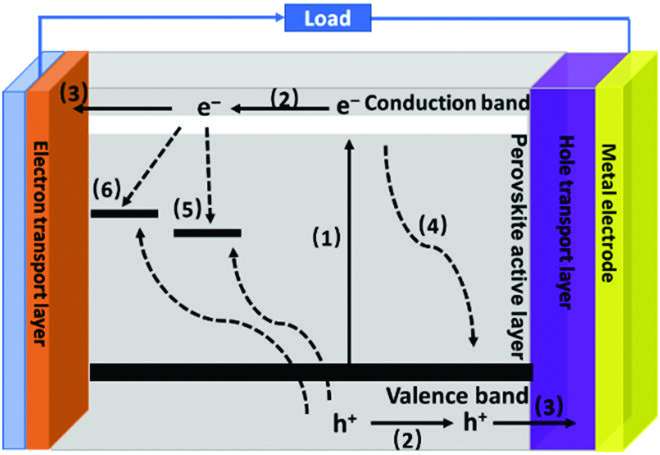This article has been reviewed according to Science X's editorial process and policies. Editors have highlighted the following attributes while ensuring the content's credibility:
fact-checked
proofread
Interfacial engineering for improved stability of flexible perovskite solar cells

Flexible perovskite solar cells with low weight, high flexibility, and conformability have attracted attention for portable electronic products. The interface is crucial in perovskite solar cells for both photovoltaic efficiency and operational stability. Researchers from the Beijing Institute of Technology have summarized the degradation mechanisms and review interfacial engineering with the emphasis on their effects in flexible perovskite solar cells. On the basis of recent research, progress in flexible devices, current challenges, possible directions, and perspectives are discussed in their article published Dec. 21 in Energy Material Advances.
"For the perovskite film, there are some factors influencing the intrinsic material stability," said paper author Qi Chen, professor from Beijing Key Laboratory of Construction Tailorable Advanced Functional Materials and Green Applications, MIIT Key Laboratory for Low-Dimensional Quantum Structure and Devices, Experimental Center of Advanced Materials, School of Materials Science and Engineering, Beijing Institute of Technology. "Stress would accumulate with temperature changes because of mismatched lattice and thermal expansion coefficients. It brought about delamination, or accelerated decomposition. Both water vapor and oxygen could have an irreversible reaction with the perovskite crystal. Illumination causes the weak link in the perovskite or adjacent layers to break."
Chen explained that besides the above stabilizing factors of the rigid devices, the stability of f-PSC is affected by other conditions. The degradation mechanism of flexible devices should be explored and summarized in more detail.
"Interface modification can passivate defects, improve interfacial adhesion, suppress ion migration, optimize band structure and regulate residual stress," Chen said. "Based on the latest research progress, we summarize the application of interface modification in flexible perovskite solar cells."
For the hole transport layers and electron transport layers, interface modification can increase the ability of the transport layer to block water and oxygen, and reduce the interface recombination by controlling the SnO2 nanocrystals, which is the key to enhance device performance.
As for the active layer, the rough morphology of the flexible substrate directly affects the quality of the perovskite film, and the deep energy level defects inside and on the surface lead to increased interfacial nonradiative recombination.
The interface modification not only improves the quality of the perovskite film, but also improves the interfacial adhesion and the flexibility of the film, thus improving the performance of the cell.
In addition, the robustness, conductivity, and transparency of flexible electrodes can be improved by interfacial engineering.
"To further improve the efficiency and stability of f-PSCs, the complex interplay between those different interfaces should be studied in detail," Chen said. "Interfacial engineering plays a critical role in the optoelectronic performance of f-PSCs. We systematically investigate the influence of the flexible substrate on charge extraction, charge transportation, and charge recombination in f-PSCs. A deeper understanding of interfacial charge dynamics is conducive to figuring out the degradation mechanism of f-PSC."
"Despite significant progress in recent years, f-PSCs have to reach large-scale production and commercial operation. Therefore, interface engineering is still the key way to solve the issues plaguing the functionality and operation of f-PSCs," Chen said.
"First, a thorough understanding of the interfacial characteristics and the related charge carrier dynamics is essential for the industrialization of f-PSC in the future. To meet the requirements of large-area device fabrication, the innovative active light-absorbing material and CTL could be developed until we accumulated sufficient precise knowledge. After reducing photovoltaic energy loss and overcoming instability issues, the industrialization of f-PSCs could be promoted.
"Second, interfacial engineering is also critically important for flexible tandem cells. If subcells are connected in series, then the interconnection layers should have outstanding charge transporting ability to act as recombination layers. Moreover, the upper layer should ensure satisfactory light absorption by the back cell. Only by delicate control of the interface property can those tandem cells to be optically thick and electrically thin enough. The public is aware of the true potential of flexible perovskite photovoltaic devices."
More information: Jie Dou et al, Interfacial Engineering for Improved Stability of Flexible Perovskite Solar Cells, Energy Material Advances (2022). DOI: 10.34133/energymatadv.0002

















